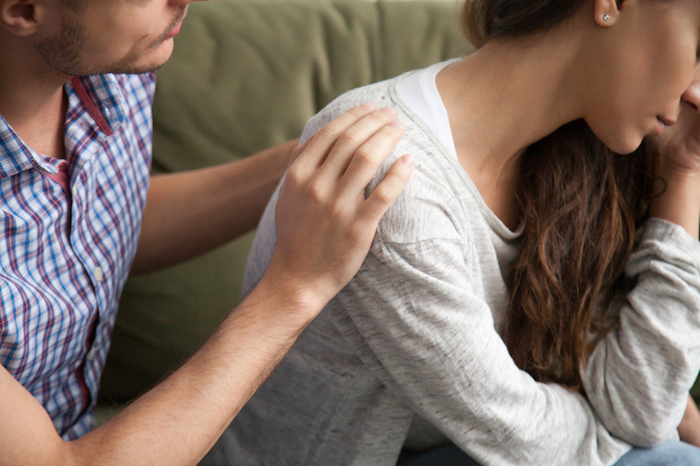- Calls to this hotline are currently being directed to Within Health or Eating Disorder Solutions
- Representatives are standing by 24/7 to help answer your questions
- All calls are confidential and HIPAA compliant
- There is no obligation or cost to call
- Eating Disorder Hope does not receive any commissions or fees dependent upon which provider you select
- Additional treatment providers are located on our directory or samhsa.gov
Why TikTok Can Lead Users to Eating Disorders

Eating disorders are complex mental health conditions. There are several factors that can contribute to someone developing an eating disorder. Poor body image is a risk factor. Media, including TikTok, is known to influence body image. [1]
Social Media and the Thin Ideal
Media can significantly influence someone’s body image and self-esteem. [1] The images we see in media, whether through magazines, film, or TV send us messages about what is considered beautiful and attractive. These messages reflect the thin ideal. The thin ideal is a societal belief that thin bodies are the most attractive body types.
Sometimes these messages are indirect, such as watching TV characters in bigger bodies be left out of social circles or casting only thin people as lead characters. Other times these messages are direct, like advertisements for weight loss.
Media exposure used to be limited to TV or magazines, but social media has drastically increased the amount of media exposure. Social media, like TikTok, gives people unlimited access to media. In 2021, about 55% of young people ages 18 to 24 used TikTok. [2]
TikTok, Body Image, and Disordered Eating
Body image is the way someone thinks and feels about the way they look. [3] TikTok can influence someone’s body image. [3] TikTok runs off of an algorithm. Simply put, the algorithm shows you content based on what you’ve searched for or looked at most often.
The algorithm may also show you things based on what other people your age, gender, or location are looking at and enjoying. If you are looking at fitness content, it can fill your feed with other fitness videos and related things. When it comes to body image, this can be a slippery slope.
Fitness content often includes images of someone’s body. If you’re constantly looking at fitness TikToks, you’re most likely going to be flooded with images of other people’s bodies. This can start off a cycle of self-comparison that can be damaging, especially if you already struggle with poor body image.
Negative body image can lead to disordered eating, especially if the videos you’re watching advertise disordered eating as a way to get the fitness results you want. There is a wide range of disordered eating behaviors. Someone can engage in disordered eating without having a full-blown eating disorder.
For example, someone might cut off entire food groups in order to lose weight even if they don’t meet the criteria for anorexia or bulimia. If you watch other people’s eating habits and assume they’re safe and healthy, you might try them out and develop a pattern of disordered eating.
TikTok Community Guidelines
Social media creates a platform to share anything they want. Sometimes people do share content that supports eating disorders. For example, advocates for bulimic behavior use certain hashtags to create a community to share eating disorder content.
Even though TikTok bans this type of content, people have found ways around this. For example, TikTok bans certain hashtags, but people have replaced letters with other symbols as a way to bypass the community guidelines.
If you are looking at content that endorses disordered behaviors, then it might influence your feelings about food and your body. This can be especially dangerous for people who already struggle with an eating disorder or are in recovery.
Tips for Using Social Media Safely
The thin ideal exists everywhere in our society. There isn’t a way to completely escape it. Everywhere you turn, there is information about weight loss, plastic surgery, or other services that try to influence the way you feel about and treat your body. It can be helpful to take steps to safely use social media. Some tips are: [3]
- Carefully choose the accounts you follow and the type of media you look at. Unfollow any accounts that make you feel bad about yourself. You can block accounts that aren’t good for you. This also lets TikTok’s algorithm know what type of content you don’t want.
- Limit the amount of time you spend on TikTok.
- Use critical thinking when looking at social media, especially if what you’re looking at makes you feel bad about yourself. Consider if the bodies being shown are realistic or could they be edited? Is the person trying to sell you something or get you to do something? Critical thinking can help you sort through and deal with any negative feelings that come up.
If TikTok is impacting your mental health or your relationship with your body, there’s hope. Reach out to a treatment provider near you.
Resources:
[1] National Eating Disorders Association. (n.d). Body Image and Eating Disorders. Retrieved June 19th, 2022 from https://www.nationaleatingdisorders.org/body-image-eating-disorders [2] Pew Research Center. (April 2021). Social media use in 2021. Retrieved June 19th, 2022 from https://www.pewresearch.org/internet/2021/04/07/social-media-use-in-2021/ [3] National Eating Disorders Association. (n.d). Media & Eating Disorders. Retrieved June 19th, 2022 from https://www.nationaleatingdisorders.org/media-eating-disorders
Author: Samantha Bothwell, LMFT
Reviewed and Approved by Jacquelyn Ekern, MS, LPC 8.1.22


